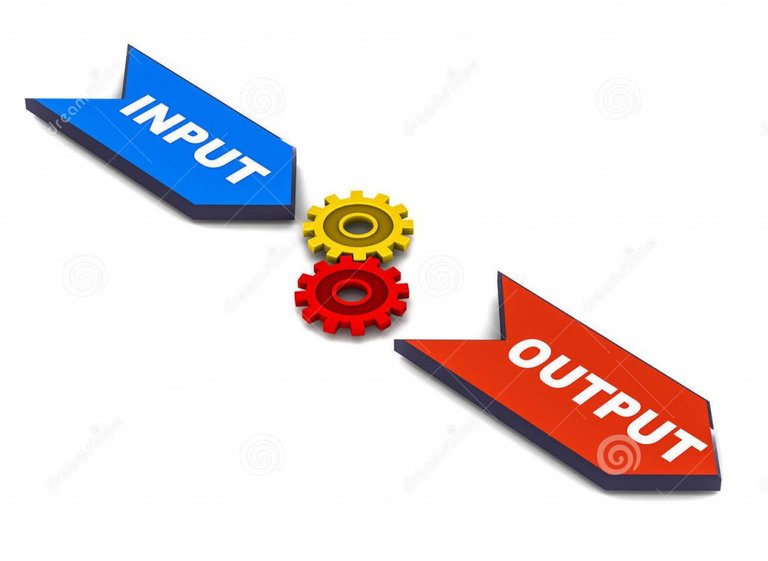In this post we are going to see few points which may need to consider while you write an article. I am neither an expert nor a guru. But still I guess I have improved myself in writing articles for the past two years. I still remember my first article, there were so many mistakes. Remember one thing "Mistakes are the key to success". Here I will point out few things, which I used to follows while writing articles. Please feel free to add your own points to this article. I hope you will like this.
Background
Last week one of my fried asked this question 'How to write good articles?'. Here I am dedicating this article to him. I hope he will like this.
How to write good article?
First of all let me ask you a question, what is a good article? As per my concern, a good article is the one which covers the needed points or solution about a problem/scenarios/technologies ect. The important fact is when he/she read your article, they must be cleared what you had written, or else your article quality may fail. You are always welcomed to include some external links if you think that will cherish your article contents. Now we will list down the points. Most important thing is, you must search for an article with the same content as you have in your article, if you found any, you should start writing article only if you have something more relevant to say more than those article. You can also explain how your article is differ from the other and why someone use yours. These points can also be included in the Introduction part which we are going to list down as our first point.
Point 1: Introduction
An Introduction is very important when you write an article, a good introduction can make your article viewer to read further. Trust me, it is very useful too. In this part you can describe what exactly you are going to say/do in this article. It must be brief. And please never use any code blocks in your introduction part, it is never meant to be so. This is the part which lets your readers understand where/what exactly you are indent to do.

Image Courtesy: squarespace
Point 2: Background
In this part, you can explain what made you to write this article. You can explain the problems you faced here, or when you get this problem. This should be brief too, here you can include source code too. Please do remember that this is just the background, so it is not advisable to include full source code and explain it here.
Point 3: What you are going to do?
Here you can explain the things which you are going to do in this article. You can list down the things for better readability. You can explain these points one by one. You can also add some code snippets too. But whenever you add any code, please try to explain even if it is basics. That will help some beginners to understand the things easily. You may feel that this basic explanation is not necessary as you have got so many experience and you may be good in it. But what about the beginners? I always believe they are the real beneficiaries of your articles. We must concentrate on both kind of users (Beginners/Experienced).

Image Courtesy: introvertadvantages
Point 4: How you are going to do?
This can be the continuation part of the point 3, or you can club each other. This is where you can explain the possible ways that you can fix your problem, Or the possible ways to achieve the same tasks. Any tasks can be achieved in different ways right? So when you write any article, you must think in all the perspective.

This will make your article rich in good contents. And this is where you must concentrate more on the coding part. When you write codes in your article, it must be formatted well. If you use WordPress as CMS(Content Management System) for your blog, you can go for any syntax highlighter plugins, or you can custom your own. If you post the article in any of the social communities, please use their formatting options.
If you have any images which explains the workflow or any tasks, it is always advisable to include those. An image is more understandable than reading the content, but always strict yourself to not include more than 10 images per article. When you include the images, please try to convert them to a particular size (Example: Width: 650 PX), this will make your article looks good. But no worries, if you have a low resolution image, and if you think enlarging that will cause any clarity issues, you can always use the same without conversion.
Image Courtesy: oneidacity
One thing you must remember is, you can always include what are all the things you have tried and what was the output you got from that. If you do so, your reader will get to know if he/she does that, they would get the same output. So it is not only about the the scenario which works fine but also the errors/problems.
Point 4: Always include output
An output is the outcome of what we tried right? So what if you didn't include that? Isn't it bad? You can include the output as an image or any content. It can be any result set too.

Image Courtesy: dreamstime
Point 5: Include source code as a downloadable format
Please add source code as a downloadable format when ever it is possible. This will definitely help your reader, so that he/she doesn't need to worry about the initial set up. We all are community guys, and we love helping each other. Am I right?
Point 6: Format the entire content
There are so many things you must concentrate when it comes to formatting. I am listing down few of them here.
- Use the same font for the entire article
- Use bold for the headings
- Highlight the lines, if it is very important (Example: Notes)
- Use code formatter when you write codes
- Resize and align images properly
- Make sure that that headings starts with Capital letter (CamelCasing :) )
Point 7: Give credits
This is very important. When ever you take some stuffs from any site, please try to give some credits to the content owner by providing the links/name. For example if you are taking an image from any site, you can include the site name just below the image. Trust me, this will make you genuine. At last it is all about genuine right?
Point 8: Write conclusion
The conclusion is the last part of your article, you can summarize the things you have written here. And also if you want, you can always ask some questions to your readers. So that the bond between you and your readers will be in multi bind format (Yes, like we have in Angular JS. LOL). You can always ask for feedback, feedback is something that we all are looking for. Each and every feedback is valuable either it is negative or positive. If you get any negative feedback, be happy and try to improve on the things you are being suggested.
In a speech in South Africa in 1890 Mahatma Gandhi said this:“A customer is the most important visitor on our premises. He is not dependent on us. We are dependent on him. He is not an interruption of our work. He is the purpose of it. He is not an outsider of our business. He is part of it. We are not doing him a favour by serving him. He is doing us a favour by giving us the opportunity to do so.”
The quotes are taken from Service-Ability
In our case it is our it is our readers. Isn't it?
Point 9: Keep history of your article
This point is optional, but you can always include this too. This is where you can keep a history of your article. You can include the dates, the caption of each versions and something about future updates.
Point 10: Impact of communities
This point is completely depends on you. If you want you can always join some on-line technical communities like C# Corner, Asp.Net, CodeProject etc. I always recommend you to join in this communities, because that is where you can learn a lot and improve yourself to a great level. Most of the communities have some moderators who has so much experience in content moderating. They will moderate your article content and improve it in all the possible way. So whenever there is an edit done by moderator, you can put a note on it and try not to do the same mistakes when you write next article. 'Experience makes a man perfect', isn't it?
Another important fact about the communities is, you will get infinitive number of visitors so infinitive number of feedback, thus increase in growth.
Image Courtesy: rafichowdhury
I may not be following these points in my articles, but I will definitely try to follow this in my next articles. Cheers
Conclusion
Did I miss anything that you may think which is needed? Could you find this post as useful? I hope you liked this article. Please share me your valuable suggestions and feedback.
Kindest Regards
Sibeesh Venu

Consider delving more into Steemit markdown. For example, under Point 6: Format the Entire Content, asterisks followed by a space can precede each of your lines to make bullet points.
Thanks much for the suggestion, I will edit it as soon as possible.
Congratulations @sibeeshvenu! You have received a personal award!
Click on the badge to view your Board of Honor.
Congratulations @sibeeshvenu! You received a personal award!
You can view your badges on your Steem Board and compare to others on the Steem Ranking
Vote for @Steemitboard as a witness to get one more award and increased upvotes!